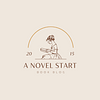You need to sign in or sign up before continuing.
Take a photo of a barcode or cover
challenging
reflective
sad
slow-paced
I know this book is a classic, which means it's an important work in the history of fiction, but for me the characters never transcended puppets. I could see Hugo's intentions behind every wooden behavior, plot first, logic last. And talk about verbose! I couldn't enjoy it.
challenging
dark
slow-paced
Plot or Character Driven:
A mix
Strong character development:
Yes
Loveable characters:
No
Diverse cast of characters:
Yes
Flaws of characters a main focus:
Yes
This is a remarkable book: even its expositional subplots are interesting. A vivid portrait of a depressing society.
medium-paced
Quiçá, o amor seja um dos temas mais antigos das histórias contadas pelo homem. Toda mitologia tem um conto de amor, canções e obras literárias, desde Helena com Homero até os de hoje, se debruçam sobre esse assunto. Por vezes, a própria história tem seu rumo alterado por sua causa e é fácil argumentar que o motivador da narrativa deste livro também é o amor. Mais do que só o amor luxurioso, como em Claude Frollo, outros personagens também personificam o amor pela vida, em Pierre, ou o amor pela vida boêmia, em Jehan.
Porém, vale a ressalva de que Victor Hugo não conta a típica história de amor. O amor no Corcunda de Notre Dame cega os personagens, fazendo com que eles tomem decisões irracionais, duvidosa, que os expõe ao ridículo e geralmente levam à consequências perigosas. Victor Hugo também tem uma forma de elaborar os seus personagens fazendo com que o leitor entenda as suas motivações, ambições e julgamentos. Podemos não concordar com suas atitudes, mas eles nos são apresentados com tanta maestria que não questionamos suas ações.
É difícil escolher um personagem humano como o principal, pois todos têm sua relevância na drama que se desenrola. E para todos é dado contexto suficiente a ponto de ser difícil colocá-los como "secundários". Victor Hugo escreve seus personagens em tons de cinza, nunca criando um personagem 100% puro nem 100% malvado. Quasímodo toma decisões erradas e ruins, podendo-se argumentar da sua "inocência" como álibi, enquanto Frollo tem a sua bondade e empatia também.
Mas nenhum amor transparece mais no livro do que o amor do próprio Victor Hugo. Mais do que a história de Quasímodo, Esmeralda e Frollo, o livro é a história de amor do autor com a cidade de Paris. Como em Os Miseráveis, é evidente a paixão que Victor Hugo tem por essa cidade, descrevendo-a nos detalhes e claramente incomodado com as mudanças que ela vem sofrendo, os seus descuidos e sua destruição pela população.
Victor Hugo embarca numa missão de salvar a cidade pelo livro, no sentido de preservá-la para sempre na sua história, contanto os seus detalhes e levando o leitor pelas ruas, costumes e arquitetura, principalmente da Catedral que dá o nome da obra (inicialmente chamada "Notre Dame de Paris"). Essas divagações do autor não são novidade para alguém familiarizado com a sua obra e, apesar de pessoalmente gostar de algumas digressões que contém detalhes enriquecedores e curiosidades que ensinam e agregam, podem ser cansativos e se alongarem um pouco demais em alguns trechos.
Apesar desse ser o real foco do livro, a narrativa contada é extremamente envolvente. Com personagens ricos, a drama envolve o leitor cada vez mais, com momentos engraçados, "mistérios" e reviravoltas à la Victor Hugo. Engana-se quem pensa que o livro não tem a sua tragédia e injustiças, pois é também uma crítica à monarquia, igreja e clero, e sociedade. Uma obra completa na qual o leitor com certeza termina o livro com algo a mais do que quando começou.
Porém, vale a ressalva de que Victor Hugo não conta a típica história de amor. O amor no Corcunda de Notre Dame cega os personagens, fazendo com que eles tomem decisões irracionais, duvidosa, que os expõe ao ridículo e geralmente levam à consequências perigosas. Victor Hugo também tem uma forma de elaborar os seus personagens fazendo com que o leitor entenda as suas motivações, ambições e julgamentos. Podemos não concordar com suas atitudes, mas eles nos são apresentados com tanta maestria que não questionamos suas ações.
É difícil escolher um personagem humano como o principal, pois todos têm sua relevância na drama que se desenrola. E para todos é dado contexto suficiente a ponto de ser difícil colocá-los como "secundários". Victor Hugo escreve seus personagens em tons de cinza, nunca criando um personagem 100% puro nem 100% malvado. Quasímodo toma decisões erradas e ruins, podendo-se argumentar da sua "inocência" como álibi, enquanto Frollo tem a sua bondade e empatia também.
Mas nenhum amor transparece mais no livro do que o amor do próprio Victor Hugo. Mais do que a história de Quasímodo, Esmeralda e Frollo, o livro é a história de amor do autor com a cidade de Paris. Como em Os Miseráveis, é evidente a paixão que Victor Hugo tem por essa cidade, descrevendo-a nos detalhes e claramente incomodado com as mudanças que ela vem sofrendo, os seus descuidos e sua destruição pela população.
Victor Hugo embarca numa missão de salvar a cidade pelo livro, no sentido de preservá-la para sempre na sua história, contanto os seus detalhes e levando o leitor pelas ruas, costumes e arquitetura, principalmente da Catedral que dá o nome da obra (inicialmente chamada "Notre Dame de Paris"). Essas divagações do autor não são novidade para alguém familiarizado com a sua obra e, apesar de pessoalmente gostar de algumas digressões que contém detalhes enriquecedores e curiosidades que ensinam e agregam, podem ser cansativos e se alongarem um pouco demais em alguns trechos.
Apesar desse ser o real foco do livro, a narrativa contada é extremamente envolvente. Com personagens ricos, a drama envolve o leitor cada vez mais, com momentos engraçados, "mistérios" e reviravoltas à la Victor Hugo. Engana-se quem pensa que o livro não tem a sua tragédia e injustiças, pois é também uma crítica à monarquia, igreja e clero, e sociedade. Uma obra completa na qual o leitor com certeza termina o livro com algo a mais do que quando começou.
I read a later edition of this book, which included chapters not published in the original. Even without reading the afterword I knew this would include the chapters that are an architectural history of the Notre Dame, and a discourse on the "death" of architecture in the light of the printed (as opposed to laboriously handwritten) word. Hugo is nothing if not don't digressive. Don't get me wrong, this is an excellent book and every word has its place - but if you are only interested in the romance (in Hugo's own words) you're better off reading something else.
In fact, Hugo suggests that only the shoehorned-in non-fiction chapters grasp at the true depths of this book, while the rest is "mere" romance and tragedy. I respectfully disagree. Hugo was writing about history, but his chapters on torture, false confession, and the questionable justice of execution are just as applicable today, let alone in his own day. I almost wonder whether he just had to do things this way to avoid censorship. Even ignoring this layer, the book is excellent in its own right - although it will take me a while, and maybe a re-read + reading about the context of this book, to figure out the purpose of the detailed breakdown of Louis XI's expenses.
In fact, Hugo suggests that only the shoehorned-in non-fiction chapters grasp at the true depths of this book, while the rest is "mere" romance and tragedy. I respectfully disagree. Hugo was writing about history, but his chapters on torture, false confession, and the questionable justice of execution are just as applicable today, let alone in his own day. I almost wonder whether he just had to do things this way to avoid censorship. Even ignoring this layer, the book is excellent in its own right - although it will take me a while, and maybe a re-read + reading about the context of this book, to figure out the purpose of the detailed breakdown of Louis XI's expenses.
dark
slow-paced
Plot or Character Driven:
A mix
Strong character development:
Yes
Loveable characters:
No
Diverse cast of characters:
Yes
Flaws of characters a main focus:
Complicated
After visiting Paris last month, I decided it was time to give the book that saved Notre Dame a try. I'd been meaning to read it for a while so it finally encouraged me to get around to it. The version I read had all the missing chapters that weren't originally published.
First off, the storyline isn't much like the Disney movie. There are quite a lot of differences but I'd say it's still ok for children. I knew it would be quite different but I wasn't sure how much.
One bit of the story that was quite confusing was the authors habit of going on a tangent. One minute you'd be happily reading the storyline, the next it would randomly be describing some architecture and going into its history or something of the like. You had to remind yourself which part of the book you were up to.
The storyline itself was quite good, I liked the side-story of Esmerelda and her mother. You do have suspicions through the story about this but it was nice there was a conclusion. Both parties were so miserable without the other it was comforting to know they finally found each other.
Frollo doesn't seem to have the same amount of authority as in the Disney movie. This was ok because he is actually an archdeacon and not a judge. The story worked well with him in this role.
I really liked Quasimodo's comparisons with beauty after Esmerelda has taken sanctuary. For example, the two vases. One is a beautiful glass vase but the flowers have withered and died overnight (it had cracks), the other is a plain pottery jug but the flowers are blossoming and still are still alive. To me it says beauty isn't everything and even something plain can be beautiful.
The language used in the book is better for adults, but at the time it was written it was probably still a children's novel. The book is quite descriptive and there are words children may not know, but to me it adds to the character of the novel.
I gave this book three stars because of the tangents the author kept going on, it was quite distracting! However the storyline was quite enjoyable so I hope you enjoy this classic tale too.
If you like my review, please visit my book blog at: http://a-novel-start.blogspot.co.uk
First off, the storyline isn't much like the Disney movie. There are quite a lot of differences but I'd say it's still ok for children. I knew it would be quite different but I wasn't sure how much.
One bit of the story that was quite confusing was the authors habit of going on a tangent. One minute you'd be happily reading the storyline, the next it would randomly be describing some architecture and going into its history or something of the like. You had to remind yourself which part of the book you were up to.
The storyline itself was quite good, I liked the side-story of Esmerelda and her mother. You do have suspicions through the story about this but it was nice there was a conclusion. Both parties were so miserable without the other it was comforting to know they finally found each other.
Frollo doesn't seem to have the same amount of authority as in the Disney movie. This was ok because he is actually an archdeacon and not a judge. The story worked well with him in this role.
I really liked Quasimodo's comparisons with beauty after Esmerelda has taken sanctuary. For example, the two vases. One is a beautiful glass vase but the flowers have withered and died overnight (it had cracks), the other is a plain pottery jug but the flowers are blossoming and still are still alive. To me it says beauty isn't everything and even something plain can be beautiful.
The language used in the book is better for adults, but at the time it was written it was probably still a children's novel. The book is quite descriptive and there are words children may not know, but to me it adds to the character of the novel.
I gave this book three stars because of the tangents the author kept going on, it was quite distracting! However the storyline was quite enjoyable so I hope you enjoy this classic tale too.
If you like my review, please visit my book blog at: http://a-novel-start.blogspot.co.uk








